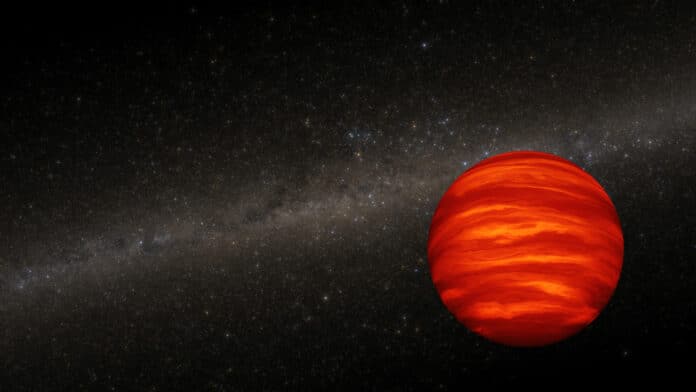A new study using the NASA/ESA Hubble Space Telescope has found that brown dwarfs, interstellar objects that are larger than Jupiter but smaller than the lowest-mass stars, lose their binary pairs over time. Brown dwarfs, like stars, can be born in pairs and orbit about each other, but the older they get, the less likely they are to have a companion dwarf.
The Hubble Space Telescope survey found that a binary pair of Dwarfs are so weakly linked by gravity that they drift apart over a few hundred million years due to the pull of bypassing stars. The astronomers who conducted the survey found no binary pairs in a sample of brown dwarfs in the solar neighborhood.
“Our survey confirms that widely separated companions are extremely rare among the lowest-mass and coldest isolated brown dwarfs, even though binary brown dwarfs are observed at younger ages. This suggests that such systems do not survive over time,” said lead author Clémence Fontanive of the Trottier Institute for Research on Exoplanets, Université de Montréal, Canada.
The new Hubble findings further support the theory that brown dwarfs are born the same way as stars, through the gravitational collapse of a cloud of molecular hydrogen. The difference is that they do not have enough mass to sustain nuclear fusion of hydrogen for generating energy, whereas stars do.
“Our Hubble survey offers direct evidence that these binaries that we observe when they’re young are unlikely to survive to old ages, they’re likely going to get disrupted. When they’re young, they’re part of a molecular cloud, and then as they age the cloud disperses. As that happens, things start moving around and stars pass by each other. Because brown dwarfs are so light, the gravitational hold tying wide binary pairs is very weak, and bypassing stars can easily tear these binaries apart,” said Fontanive.
The team selected a sample of brown dwarfs previously identified by NASA’s Wide-Field Infrared Survey Explorer. It sampled some of the coldest and lowest-mass old brown dwarfs in the solar neighborhood. These old brown dwarfs are so cool (a few hundred degrees warmer than Jupiter in most cases) that their atmospheres contain water vapor that condenses out.
The study shows that brown dwarfs remain single for the rest of their very long existence. “This is the best observational evidence to date that brown dwarf pairs drift apart over time. We could not have done this kind of survey and confirmed earlier models without Hubble’s sharp vision and sensitivity,” said Fontanive.
Journal Reference
- Fontanive, C., Bedin, L. R., De Furio, M., Biller, B., Anderson, J., Bonavita, M., Allers, K., & Pantoja, B. (2023). An HST survey of 33 T8 to Y1 brown dwarfs: NIR photometry and multiplicity of the coldest isolated objects. Monthly Notices of the Royal Astronomical Society, 526(2), 1783-1798. DOI: 10.1093/mnras/stad2870
